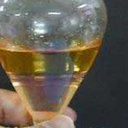Electrochemical dual-aptamer-based biosensor for nonenzymatic detection of cardiac troponin I by nanohybrid electrocatalysts labeling combined with DNA nanotetrahedron structure.
Parole chiave
Astratto
The accurate detection of biomarkers for acute myocardial infarction (AMI) plays an important role in clinical diagnosis and management process. In this work, we developed an electrochemical biosensor by using magnetic metal organic framework (MMOF) nanocatalysts and DNA nanotetrahedron (NTH) based dual-aptamer probes for nonenzymatic detection of cardiac troponin I (cTnI), a gold standard biomarker for the early diagnosis of AMI. Firstly, the NTH-assisted dual-aptamer (Tro4 and Tro6) capture probes were immobilized on the screen-printed gold electrode (SPGE) for the highly enhanced capture the target cTnI with steady support and optimized interface density. Then, the MMOF Fe3O4@UiO-66 nanozymes were decorated by bimetallic Cu@Au nanoparticles and two kinds of aptamer. This fabricated nonenzymatic nanoprobe1 (NP1) can be applied for recognizing the cTnI specifically and amplifying the current signal by catalyzing the oxidation of hydroquinone (HQ) to benzoquinone (BQ) with H2O2. The target proteins were captured to fabricate a supersandwich-like structure on a SPGE interface. Furthermore, the nanoprobe2 (NP2) of Cu@Au nanozymes labeled with dual-complementary DNA (cDNA) to the dual-aptamer, were anchored on the NP1 through DNA hybridization, leading to the formation of cluster-based nanoprobes for further enhancing detection sensitivity. Finally, this enzyme-free electrochemical aptasensor exhibited great analytical performance with a dynamic range of 0.05-100 ng/mL, a low detection limit of 16 pg/mL, high selectivity and good repeatability. The fabricated aptasensor has great potential development in the field of clinic disease diagnostics for AMI.



